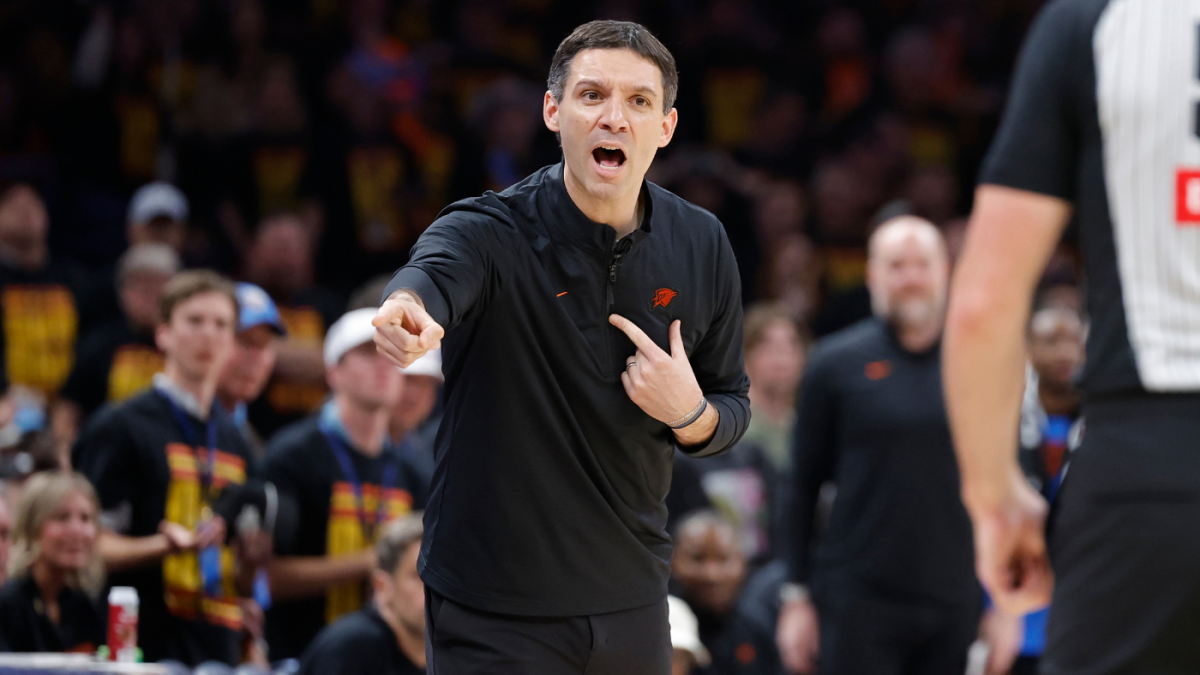The Daigneault Dilemma: A Deep Dive into the Thunder’s Controversial Game 1 Strategy
The Oklahoma City Thunder found themselves in a familiar yet tense situation during Game 1 of their Western Conference Semifinals against the Denver Nuggets. With a three-point lead and just 11 seconds left on the clock, head coach Mark Daigneault faced a critical decision that would ultimately define the outcome of the game. The strategy he chose, to foul intentionally, was met with both praise and criticism, sparking a debate that has resonated throughout the basketball community.
The Setting
The stage was set for a dramatic finish. The Thunder, leading 119-116, had the upper hand but knew that the Nuggets were not a team to be underestimated. The clock ticked down, and the tension in the arena was palpable. Daigneault had to make a split-second decision that would either secure the win or open the door for a Nuggets comeback. The choice he made would become the talk of the town, dividing opinions and igniting discussions among fans, analysts, and fellow coaches.
The Strategy: Intentional Fouls
Daigneault’s decision to foul late in the game was not a novel idea. Coaches across various levels of basketball often resort to this tactic to thwart a potential game-tying or game-winning three-point attempt. The rationale behind this strategy is to force the opposing team into a one-and-one situation, where they must make two free throws to tie the game or three to win it. However, this approach is fraught with risks. If the fouled player makes both shots and the team retains possession, the strategy can backfire spectacularly.
The Execution
With the Thunder leading by three, Daigneault chose to foul Denver’s Aaron Gordon. Gordon, known for his athleticism and finishing ability, was a high-risk choice for this strategy. The foul sent Gordon to the free-throw line, where he made one of two shots, reducing the Thunder’s lead to 119-117. The Nuggets retained possession, setting the stage for a dramatic finish. The inbound pass was quick, and the tension in the arena reached its peak.
The Backfire
The strategy backfired in a spectacular manner. After Gordon’s free throws, the Nuggets inbounded the ball swiftly. Nikola Jokic, one of the league’s most talented passers, found Aaron Gordon wide open beyond the three-point line. Gordon’s shot swished through the net, tying the game at 119-119 with just 0.8 seconds remaining. The Nuggets then capitalized on a Thunder turnover, securing a 121-119 victory in a stunning comeback. The arena erupted in a mix of disbelief and excitement, while the Thunder players and coaching staff were left to grapple with the aftermath of Daigneault’s decision.
Daigneault’s Defense
Despite the backlash, Mark Daigneault stood by his decision. He argued that the intentional foul was not the primary reason for the Thunder’s loss. Instead, he pointed to other factors, such as the team’s inability to secure the ball and execute down the stretch. Daigneault’s stance highlights a broader coaching philosophy: sometimes, the risk is worth the potential reward, and the outcome is not solely determined by the final play. This perspective underscores the complexity of coaching decisions in high-pressure situations, where split-second choices can have monumental consequences.
The Broader Impact
Daigneault’s strategy, while controversial, has sparked a larger conversation about coaching decisions in high-pressure situations. It has also shone a light on the nuances of NBA rules and the creative ways coaches exploit them. For instance, Daigneault’s use of a “permanent sub” tactic to disrupt Nikola Jokic’s rhythm showcased his innovative approach to the game. This tactic involved placing rookie Dillon Jones in a unique position on the court to disrupt Jokic’s momentum and force referees to frequently halt the game. While this tactic drew mixed reactions, it underscored Daigneault’s willingness to think outside the box and challenge the status quo.
The Permanent Sub Tactic
One of the most intriguing aspects of Daigneault’s coaching style is his use of unconventional tactics, such as the “permanent sub” strategy. This involved placing rookie Dillon Jones in a unique position on the court to disrupt Jokic’s momentum and force referees to frequently halt the game. While this tactic drew mixed reactions, it underscored Daigneault’s willingness to think outside the box and challenge the status quo. The “permanent sub” tactic is just one example of Daigneault’s innovative approach, which often involves exploiting the rules and creating disruptions to gain an edge over the opposition.
The Future of Daigneault’s Strategies
As the NBA continues to evolve, so too will the strategies employed by its coaches. Daigneault’s bold decisions, whether they succeed or fail, will undoubtedly influence future coaching strategies. His willingness to take risks and innovate sets a precedent for younger coaches looking to make their mark on the league. The NBA is a dynamic and ever-changing landscape, and coaches like Daigneault are at the forefront of this evolution, constantly pushing the boundaries of what is possible on the court.
The Daigneault Doctrine
The Daigneault Doctrine is one of calculated risks, innovative thinking, and a relentless pursuit of victory. Daigneault’s decision to foul late in Game 1 against the Nuggets was a high-stakes gamble that ultimately did not pay off. However, it highlighted his coaching philosophy: to take calculated risks and exploit every possible advantage. Whether praised or criticized, Daigneault’s strategies reflect a deeper understanding of the game and a commitment to innovation. As the Thunder continue their journey, Daigneault’s bold decisions will undoubtedly shape their future and inspire a new generation of coaches. The Daigneault Doctrine is not just about winning or losing; it is about pushing the boundaries, challenging conventions, and leaving a lasting impact on the game.

